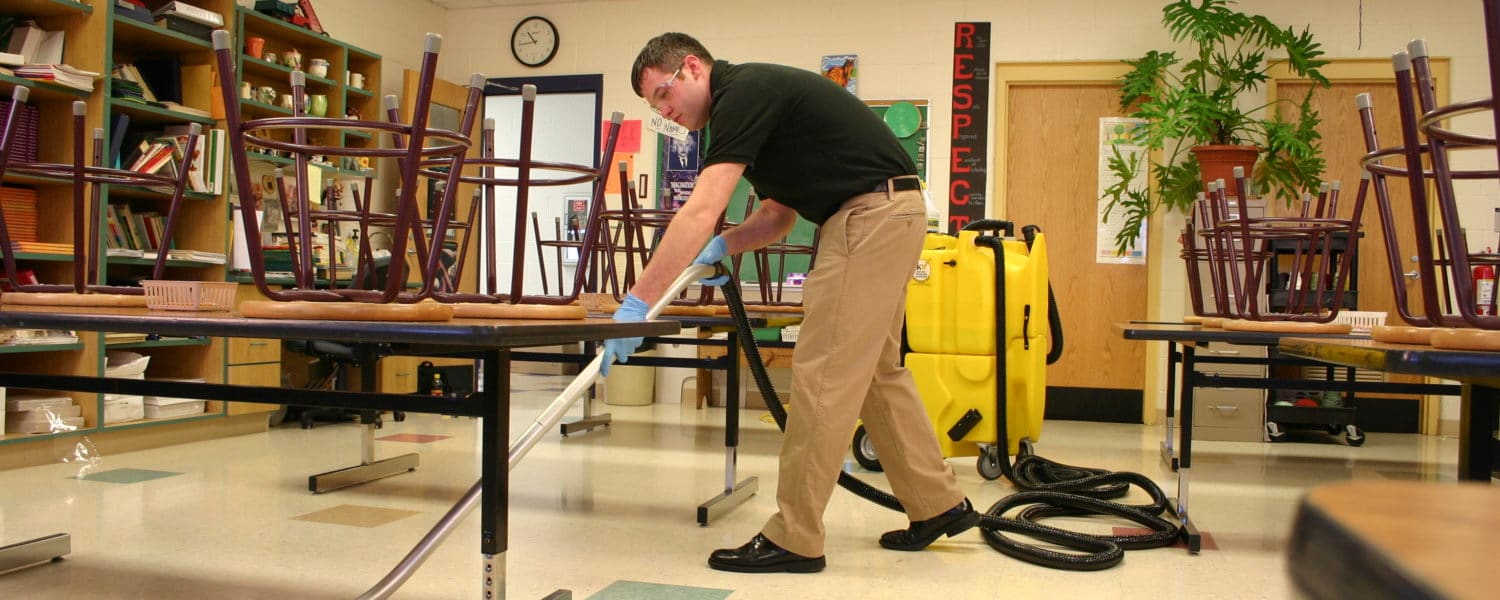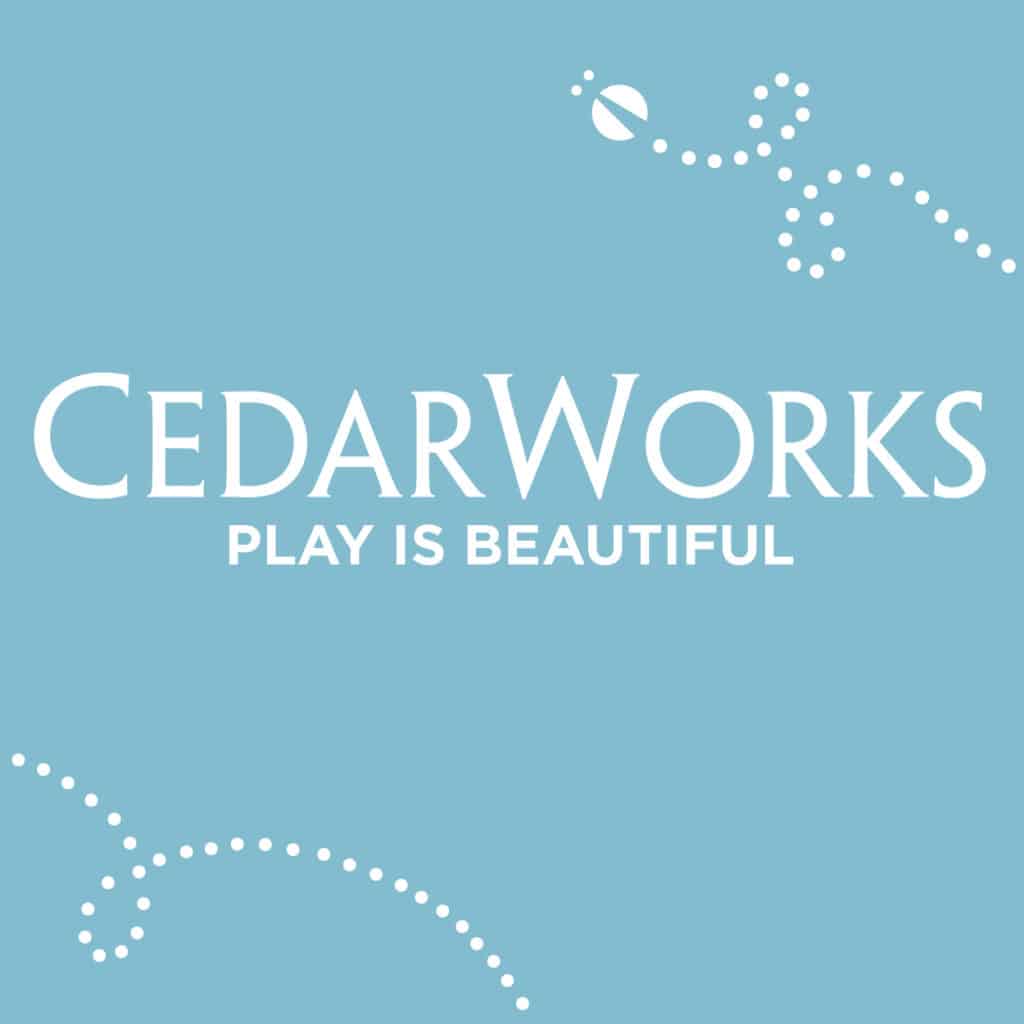By Matt Morrison
There are several types of floors that church properties can select from for their nurseries. Many select carpet. It helps “quiet” a nursery room. Plus, we now know that carpet absorbs airborne pollutants, helping to prevent them from being inhaled, which helps protect health. Carpet also helps prevent slip and fall accidents from occurring and is softer under foot.
But carpet does have its downside. First of all, it can take a beating in a nursery setting, which can limit its lifespan. Whereas a traditional commercial carpet may last five to seven years in an office setting, it may only last about three years in a nursery.
And then there is the soiling. Carpet in a nursery room can be viewed as a “wall-to-wall sponge.” Everything and anything spilled on the floor is absorbed into the carpet. This means the carpet must be regularly cleaned.
Using a less costly “dry” carpet cleaning method, which often can be performed in-house, just won’t do the job. Professionals with portable and truckmount extractors must be brought in. Prices can vary, but a quality carpet cleaning can be costly.
The other flooring option for a church nursery is some type of hard surface flooring. Most common is vinyl composite tile (VCT). But some different kinds of “laminate” floor coverings are also finding their way into the nursery
These laminate floors mimic the look of other floors, such as wood or even marble. They are very durable and can last for years with proper care. Plus, cleaning typically involves just daily vacuuming and damp mopping.
By the way, vacuuming is always recommended over sweeping or dust mopping. It helps prevent dust from becoming airborne.
As to finishing (waxing) the floor, here is what we need to know. The primary purpose of the floor finish is to protect the floor, so it is recommended for most hard surface floors. (Some laminate floors may not require floor finishing.)
However, a finished floor does require more time and attention and may need to be stripped and refinished at least yearly. This is a labor-intensive job that once again can be costly and is not considered environmentally friendly.
Plus, to keep the floor looking its best, regular polishing or burnishing is typically necessary. Because of these issues, many church properties decide to leave nursery room floors “flat,” having no finish applied at all.
So, we’ve covered the basics regarding the two types of floors typically installed in nurseries, provided some of the pros and cons of each, discussed their cleaning and maintenance needs, and touched on cost-related issues. But there is one thing we need to discuss further: mopping.
Mopping is simply no longer recommended for cleaning floors. While this may still be the most common way to clean hard-surface floors, enough reports have been published documenting the problems mopping causes that many administrators are turning their backs on this old cleaning method.
In fact, if your church consulted with a healthcare expert, the expert might go as far as to say that particularly when it comes to the health of children, mopping a floor is the worst thing we can do.
“Just the Facts Ma’am”
So, why would someone in the healthcare industry advise against mopping floors? Very likely they have read studies, such as a very recent one published in the American Journal of Infection Control.
In this study of 160 patient rooms, a Cleveland, Ohio, research firm reported, “we found that the floors in patient rooms were frequently contaminated with pathogens” and that “contact with objects on floors frequently resulted in the transfer of pathogens to hands.” This is how cross-contamination and the spread of disease begins.
But, can we compare nursery room floors to patient room floors?
No, they are not the same, but nursery room floors, like all floors, do get contaminated. For instance, spills, dropped food, children getting sick or having “accidents” on the floor, shoe bottoms collecting and then carrying outdoor contaminants on to the floor, can all cause a nursery room floor to become a depository for germs and bacteria. And cleaning them using mops can make the situation worse.
Here’s why. A 1971 study investigating microbial contamination on floors found that mopping floors can cause harmful pathogens to spread from one area of the floor to another.
In other words, the cleaning tool we have traditionally used to clean and maintain floors is the same tool that is spreading disease.
A Closer Look at the Spread of Floor Pathogens
So, let’s analyze how those researchers in the 1971 study came to this conclusion. They started by cleaning the floor with a clean mop and fresh cleaning solution. Then:
As the mop was used, it collected soils and pathogens from the floor that were absorbed into the mop.
When the mop was wrung out and then dipped back in the cleaning solution, many of those soils and pathogens were placed in the cleaning solution.
At this point, both the mop and the cleaning solution were contaminated.
The mopping process continued; the mop steadily collected more contaminants as did the cleaning solution.
A saturation point was reached; it was at this point that the mop began spreading pathogens to other areas of the floor instead of removing them.
Once the contaminated mop was stored, bacteria growth continued because the mop was typically left to air dry or worse, left in the cleaning solution or a damp bucket.
We should add two more points. First, when the mop is used again, it will begin spreading contaminants from the start, as soon as it is used.
Second, in a nursery room, children play on the floor. So, if pathogens are on the floor, they will collect on a child’s hands, easily finding their way into the child’s mouth, nose, and eyes.
Preventing the Spread of Floor Pathogens
It is relatively easy to conclude that to stop the spread of floor pathogens when cleaning floors we must stop using mops. This means we must look for alternatives and, fortunately, they are available.
We could use a traditional automatic scrubber. These machines apply fresh cleaning solution to the floor, agitate the floor with a scrub brush to loosen soils, and then vacuum up the moisture and soils. No mops are used. There is no spreading of germs, bacteria, or pathogens.
However, before running out and purchasing one, church administrators should know that “auto scrubbers” are costly, both to purchase and maintain.
A less costly option is what is referred to in the professional cleaning industry as an “auto vac.” The machine applies fresh cleaning solution to the floor; a pad agitates the floor to loosen soils, which are then vacuumed up. Once again, there is no spreading of germs, bacteria, or pathogens.
So, here’s our takeaway. While its importance is sometimes overlooked, the type of floor covering selected for your nursery is crucial.
Be fully aware of the pros and cons of each kind of floor covering and their ongoing maintenance needs. This is especially true if hard surface floors have been installed.
And remember, mopping is out. To keep nursery students healthy, we must look for alternatives.
Matt Morrison is the communications manager for Kaivac, developers of the OmniFlex Crossover floor cleaning system, www.kaivac.com.





















